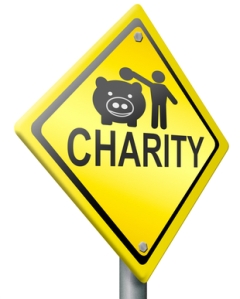Did you donate some of your household items to charity during the past year? If so, you may be eligible to deduct the value of these items as a charitable contribution on your federal income tax return. The IRS allows taxpayers to claim an itemized deduction for these items as long as they meet certain standards.
Tips for Deducting Noncash Contributions
If you want to deduct your noncash charitable donations on your return, you’ll have to meet a few requirements. For one thing, the organization that you donate the items to must be a qualified charity that is legally recognized by the IRS. This includes most of the popular charities such as Goodwill, the Salvation Army, non-profit hospitals, and most religious organizations. If you make your noncash charitable donations by taking household items to a drop box in your neighborhood, make a note of the charity listed on the box and research it online. You’ll need to make sure that the organization is a qualified charity if you intend to deduct the items you donate.
Should you decide to make a noncash contribution in person, it’s usually best to ask for a receipt from the organization. In most situations, the charity will simply give you a written receipt of the items you donate, not their value. These receipts become especially important if you donate an item that is worth $500 or more. In this case, it may be advisable to have it professionally appraised and then keep a copy of that appraisal in your records in case of audit.
How to Report Noncash Contributions
Noncash contributions are reported on Form 8283. Once you list the deductions and calculate the total, you’ll carry the total over as an itemized deduction on Schedule A. If the total of your itemized deductions exceeds your standard deduction, then it’s advantageous to use these deductions on your return. To claim the household items you donate, you’ll need to determine the fair market value of the items. You cannot use the amount you paid for the item as the basis for your deduction.
Since the fair market value of items can fluctuate wildly, it’s a good rule of thumb to imagine how much the item would sell for at a thrift store and then use that amount as the fair market value. However, this only applies if the items you donate are in good condition. If you’re still unsure about the value, you can research the selling prices of similar items on the internet or in your local newspaper.
This blog brought to you by TaxLane, LLC, providing tax preparation and consulting services in greater Pittsburgh, including the communities of Allison Park, Hampton, Shaler, and Glenshaw.



